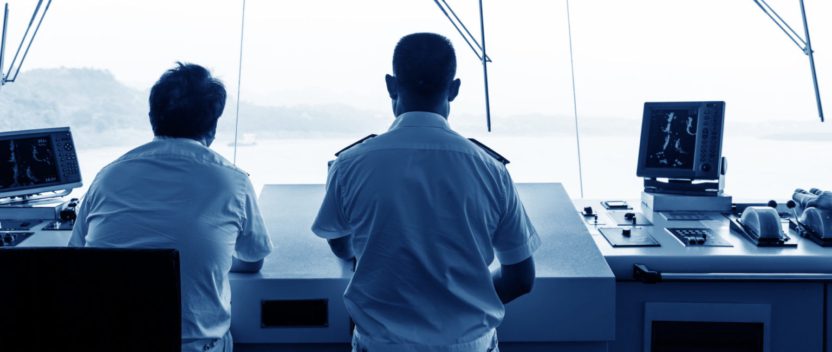Disruption needs patience, not giant leaps
In the second part of our interview with ShipServ founder and CEO Paul Ostergaard we look beyond the challenge of starting – and maintaining – a new model of business and discuss the bigger picture. How does innovation actually happen and how should the industry apply it?
There may be no magic formula to selling a service but persuading people that change is to be welcomed takes a combination of vision and a clear understanding of the sector you are addressing.
And it becomes clear that ShipServ succeeded because it understood the market rather than attempting to impose a change that wasn’t needed. For parallels, one need only consider the millions of dollars in value destruction that resulted from such ventures as MaritimeDirect, LevelSeas and SetFair as well as a host of other, lower profile companies.
Just this week, Canadian mobile device maker BlackBerry announced plans to move into the transportation industry with new technology ‘that will help shippers keep tabs on their freight’. The comments of Sandeep Chennakeshu, president of the BlackBerry’s Technology Solutions unit sound eerily like those of the shipping dotcoms which aimed to ‘disintermediate’ so many businesses.
BlackBerry’s plans for a cloud-enabled box built into shipping containers might sound exciting, did such a thing not already exist, but displaying considerable hubris Chennakeshu described the use of track and trace as “a very large business, in the tens of billions of dollars, with very low penetration.”
Despite Blackberry’s apparent failure to grasp recent history, Ostergaard says he was happy to combine the rational and somewhat existential in formulating a business plan.
“I think in general anyone with a dream to innovate has to really factor in, on one hand, making sure there’s a need out there that their innovation will meet, and then make sure it matches their capabilities as a company.” Or in other words, be prepared to cut your cloth according to market needs, but don’t lose sight of your motivations, either.
“When I say what the market needs, it’s not always what it thinks it needs. That’s where a bit of dreaming and a bit of boldness can come in,” he continues. “It’s being able to find that intersection between the need and the capabilities that is extremely important.”
When he started ShipServ, Ostergaard admits to some self-analysis as to why he was suited to address the need and whether he could build an organisation with the skills to meet it. “It’s that intersection. The way we think about it internally is the need but also the dream; what is it that we want long term? So it’s adding that third thing into it.”
But how well does that approach to innovation go over when he’s talking to the suits in a large ship manager or a small ship supplier on thin margins? “It’s important to combine your dream with some small tangible steps or benefits that anybody can relate to,” he says. “You need to gradually build confidence in your story and then subsequently in your actual execution. You need to bridge your dream with the current situation.”
To that extent, he says, technology companies are fortunate that shipping is a large, global industry that, for many reasons, cannot always be at the forefront of innovation. References from other industries are useful waypoints, because it seems that success requires giving the C-Suite confidence that they will not be the first adopters.
Lucky too perhaps that a grasp of innovation, or at least an attitude to change, can be clearly drawn between sectors. The container industry for its part is part of a global, supply chain to which it has to be very tightly integrated. That creates standardisation and consolidation as well as benefiting from a tendency towards focussing on ongoing operational efficiency beyond what happens in between the sale and purchase of the ship.
“Then you have other segments of the industry that tend to be financed differently, are often highly leveraged and which tend to be more focused on the appreciation or depreciation of their assets and much less on the operational efficiency side. The two are converging albeit slowly, something that presents its own challenge.
“In general, the shipping industry is moving more towards the long-term, more sustainable, more operationally-focused side of that spectrum. But the challenge for long-term innovation thinking is getting to grips with the fact that for the business to be sustainable, they’re going to have to come up with new ideas or new approaches to solve the long-term problems.”
Given the combination of challenges the industry faces, it’s something many in the industry would welcome, though it may take longer to cure its practitioners of an addiction to boom and bust. That temptation to chase the bigger, better deal will stay and while the length of cycles may change, it seems certain that the industry needs to learn to live with disruption.
Now, almost part of the shipping establishment and serving blue chip clients, does Ostergaard see ShipServ as a disrupter?
“I think in the very long-term you could say that we were definitely a disruptor but disruption becomes so long-term that it’s not really disruption anymore, it’s just change. When we look back, 10 years from now, I think we will have changed things quite dramatically but it still won’t compare to the things you’re seeing in the consumer Internet,” he says.
What today’s would-be shipping industry innovators need to grasp – in addition to understanding one’s own capabilities – is that while consumer companies can theoretically convince a lot of people to change the way they do things overnight, in a B-to-B environment it’s impossible to get 10 million users in a week.
“No matter how good your story is, you still have to have a process. In many cases, you have a very sticky, strongly embedded process in most companies and that is a process people have to go through because the user is not the decision-maker,” he adds.
The consumer network dynamics that can create growth at light speed just don’t exist in the B-to-B environment, he says, something that means “you need a lot of patience with your ‘disruption’ in a B-to-B environment”.
Does that mean that shipping is doomed to a series of small steps rather than the ability to make giant leaps, to blue sky technologies such as wind-assisted power, unmanned ships or new hi-tech materials? Ostergaard is still optimistic, just perhaps a bit more sanguine these days.
“I wouldn’t mind giant leaps, I just think it’s unrealistic. It’s really, again, the change management thinking that matters. You need to give everybody a clear path to the next point on the journey.”
Ends


